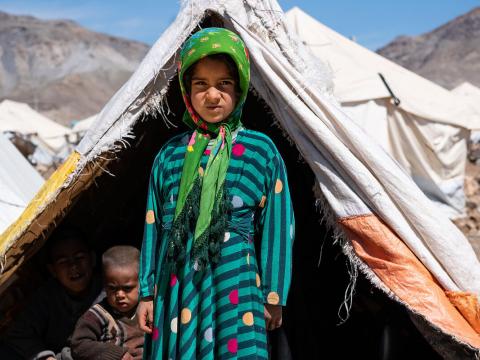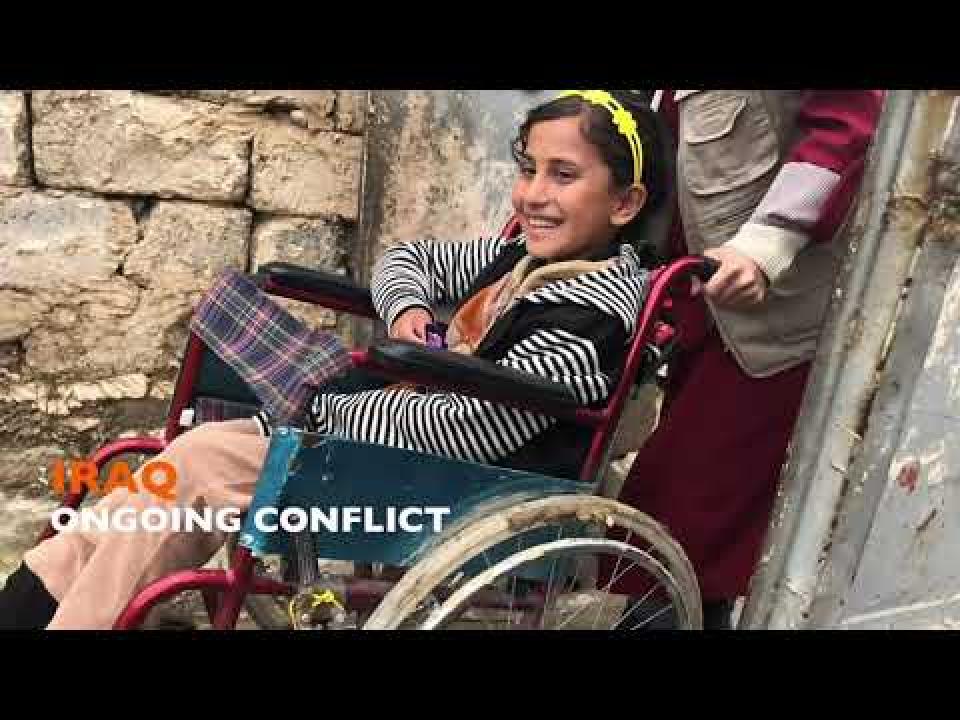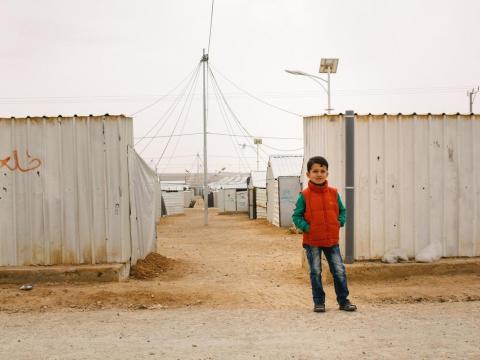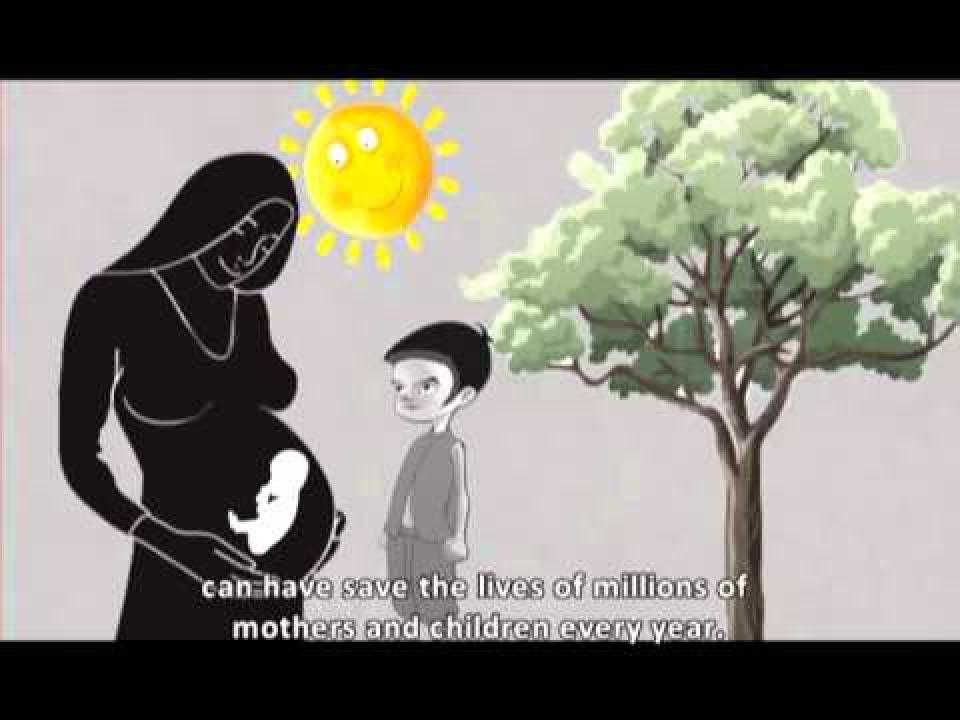
How do we protect children caught up in war and a pandemic?
By Nina Nepesova, World Vision's Global Director for Humanitarian Policy and Advocacy
The COVID-19 pandemic does not discriminate. It does not stop for people living in conflict, under the constant salvo of bombs and gun shots. It does however put into sharp perspective the catastrophic impact of failing to protect civilians in times of war.
Over the last 20 years, the UN Security Council identified protection of civilians in armed conflict as central to its mandate for ensuring international peace and security. As Council President in 1999, Lloyd Axworthy can be memorably quoted, “the ultimate aim of the Council’s work is to safeguard the security of the world’s people, not just the States in which they live.”
As COVID-19 hits people living in war zones, where 1 in 5 of the affected is a child, and where more than 70 million people have been forced to flee their homes - never has this statement been truer, and never has there been a greater need for political will and urgency for action to protect civilians.
Significant progress has been made to build the international normative framework for the protection of civilians. Compliance with international humanitarian law (IHL), the UN Security Council decisions on the conduct of hostilities, facilitating access to humanitarian assistance, protecting forcibly displaced people, women and children, providing protection through UN peace operations, have all been enhanced over the years. Building on the 20th anniversary of the Protection of Civilians agenda and the 70th anniversary of the four Geneva Conventions, France and Germany launched a call to action to strengthen respect for international humanitarian law in September 2019. At the 33rd International Conference of the Red Cross and Red Crescent, States adopted a road map entitled “Bringing international humanitarian law home: a road map for better national implementation of international humanitarian law.”
Yet, exacting compliance from parties to the conflict, and ensuring accountability by perpetrators who hold responsibility for violating IHL and targeting civilians, are few and far between. In fact, blatant violations of IHL have risen. The situation on the ground is the worst we’ve seen in years.
Last year more than 20,000 civilians were killed or injured in the 10 countries where the UN monitors civilian casualties. Women and children represented 42 per cent of these – the primary victims of armed conflict yet very rarely the perpetrators.
Afghanistan represents the world’s deadliest war zone; an average of 9 children were killed or maimed every day in 2019. This month, a new level of egregious violence - an attack on the maternal ward in Kabul, killing mothers, newborns and nurses. In Syria during 2019, a health facility was attacked every 4 days.
As the world grapples with COVID-19, humanitarians and health workers in war zones are left face to face with an oncoming disaster. Attacks on health facilities continue, and health supplies are facing even more delays, with new COVID-19 impediments added to the pre-existing access challenges.
Lockdown policies have slowed down operations. Despite commitments by Governments to class health and humanitarian workers as essential staff, application of the policy is uneven across contexts, resulting in bureaucratic delays, putting limits on the scale of assistance that can be delivered.
In February this year, attacks on 10 education facilities resulted in the death of at least 9 children and 3 school teachers, in northwest Syria. Attacks on education deny children the most basic right to learn, and to have hope for a different future that doesn’t involve fear, violence and destruction. As COVID-19 rages, and lockdowns continue, for children caught in conflict, whatever opportunity to learn was left, is gone completely.
Adding to the injury, despite all the normative improvements, is a complete failure by the Security Council to act even in the face of the pandemic. This month, the Council failed to reach a global ceasefire proposal to help prevent the spread of the pandemic.
Watching closely the UN Security Council Open Debate on Protection of Civilians this week, I once again heard a lot of promises, many I’m sure, made in good faith. Yet, I continue to ask what will be done today, for the millions of children caught up in war, and now in a pandemic? How much longer can they live on platitudes? The norms and rules are clear. The roadmap is available. The accountability mechanisms to end impunity exist. Now is the time to act.
World Vision is calling on States and all parties to conflict to:
- Urgently heed the call of the UN Secretary-General for a ceasefire, and support the UN system to prevent, respond to and mitigate the impacts of COVID-19, taking steps to ensure humanitarian access, the continuity of ongoing humanitarian assistance, and the capacity to scale response to COVID-19’s direct and indirect impacts are realised.
- Commit to the protection of civilians and compliance with IHL, calling for and taking actions to end impunity, holding perpetrators to account;
- Ensure robust and sustained engagement with civil society organizations, especially where protection remains challenging and civilians are the most directly impacted, recognizing civil society organizations are key to helping civilians protect themselves;
- States need to demonstrate leadership by taking practical steps and dedicating financial resources to advance protection of civilians, including children in armed conflict, such as by ensuring inclusion of protection capacity in UN peacekeeping missions, development and implementation of national policy frameworks, and supporting the principled and sustained engagement with non-state armed groups and NGOs to improve humanitarian access.



